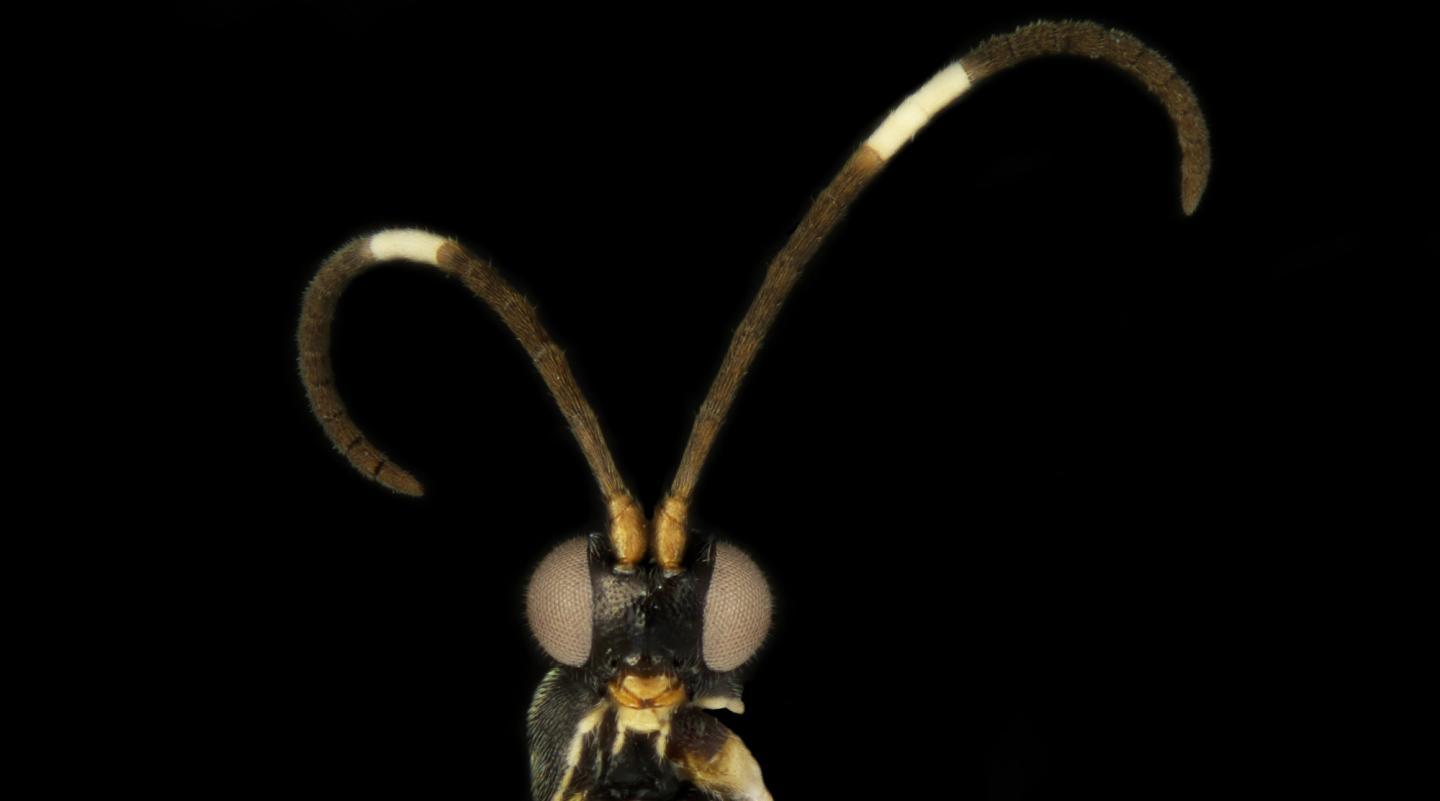
Credit: Dr Erinn Fagan-Jeffries
University of Adelaide researchers were inspired by everything from chocolate biscuits and Doctor Who aliens when choosing names for 10 new species of wasps.
“I named one wasp Sathon oreo as the antennae are dark brown with a thick white stripe in the middle… like an Oreo chocolate biscuit,” says Dr Erinn Fagan-Jeffries from the University of Adelaide’s School of Biological Sciences.
While the new species Choeras zygon is named for the Zygon race of aliens in Doctor Who.
“Zygon aliens consume their host whilst inhabiting them, a trait particularly relevant to parasitic wasps,” says Dr Fagan-Jeffries.
These wasps inject their eggs into live caterpillars, and the baby wasps slowly eat the caterpillar from the inside out. As gruesome as it sounds, they are very important in ecosystems for regulating native caterpillar populations.
One of the new wasps, Choeras bushblitz, takes its name from the Bush Blitz species discovery program, a unique multi-million dollar partnership between the Australian Government, BHP and Earthwatch Australia to document plants and animals across Australia.
“Less than 10% of this group of wasps have scientific names, which is why programs like Bush Blitz are so vital. We have discovered over 1,660 new species since 2010, and 17 of those are wasps,” says Jo Harding Bush Blitz Manager.
Taxonomy, the scientific discipline of describing new species, is vital for understanding and documenting the living things around us. “Until taxonomists name and formally describe a species, it is difficult for other researchers, such as those working in conservation, or biological control, to do anything with it,” says Ms Harding.
Inspirational taxonomists and entomologists that helped Dr Fagan-Jeffries collect vital specimens for this research, as well as those who feature prominently throughout her career, were also honoured with species named after them.
“I always loved insects in school, and I had a lot of incredible support from entomologists, back then and also during my PhD, who fuelled my passion for following a scientific career path,” Dr Fagan-Jeffries says. “Naming species after those people is just a tiny way of saying thank you.”
Species named after researchers include Dolichogenidea brabyi, Dolichogenidea garytaylori, Dolichogenidea forrestae and Dolichogenidea kelleri, after entomologists Michael Braby, Gary Taylor, Jan Forrest and Michael Keller.
###
The ten new species of parasitic wasp have been published open access in Zootaxa, and the study was supported by the Australian Biological Resources Study and Bush Blitz.
Media Contact
Dr Erinn Fagan-Jeffries
[email protected]
Original Source
https:/
Related Journal Article
http://dx.




